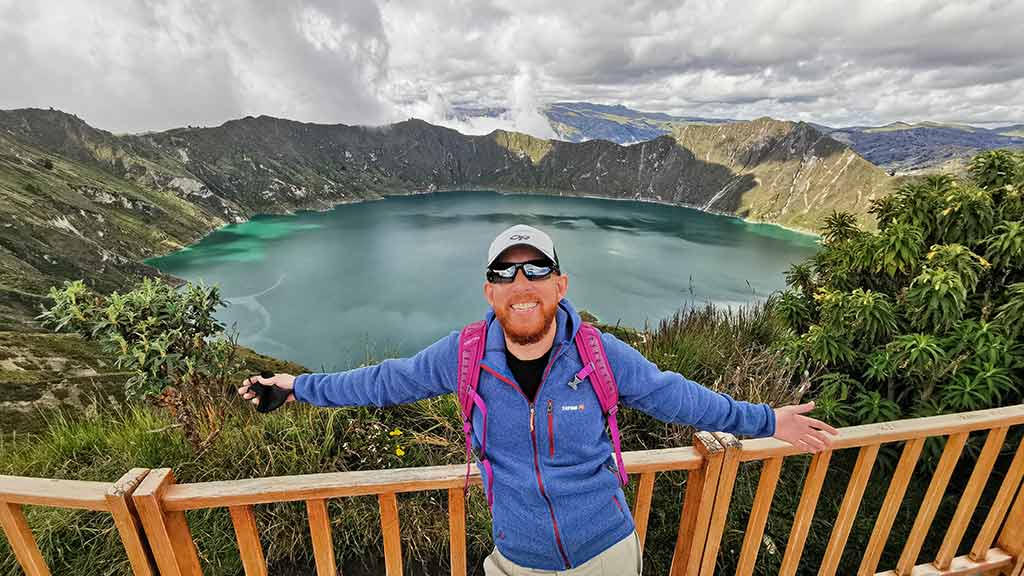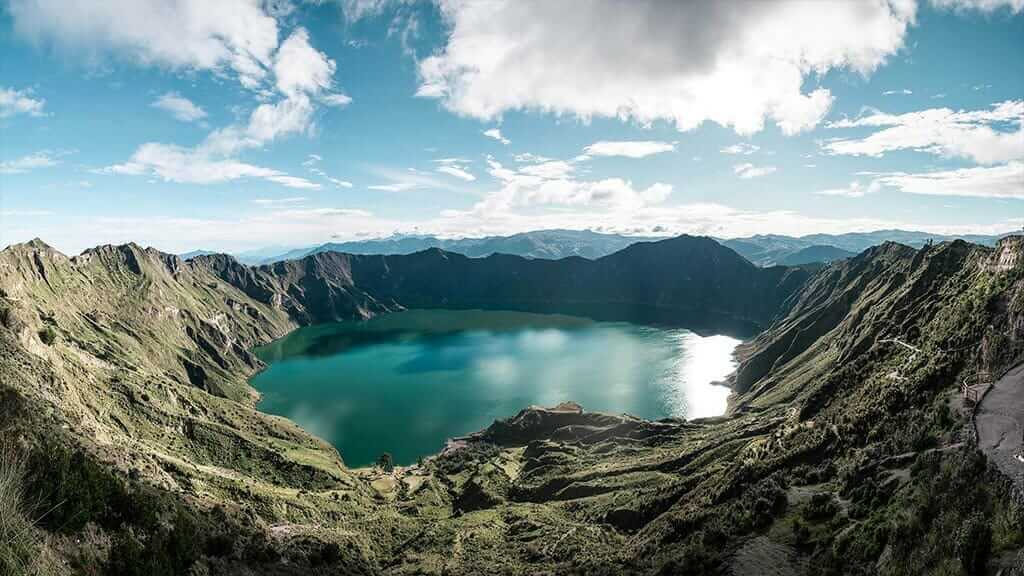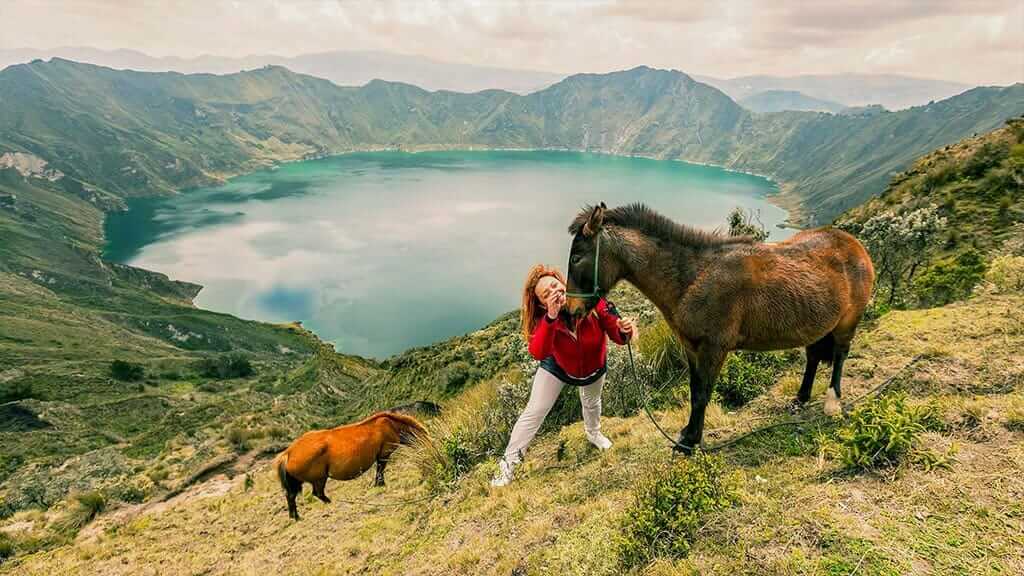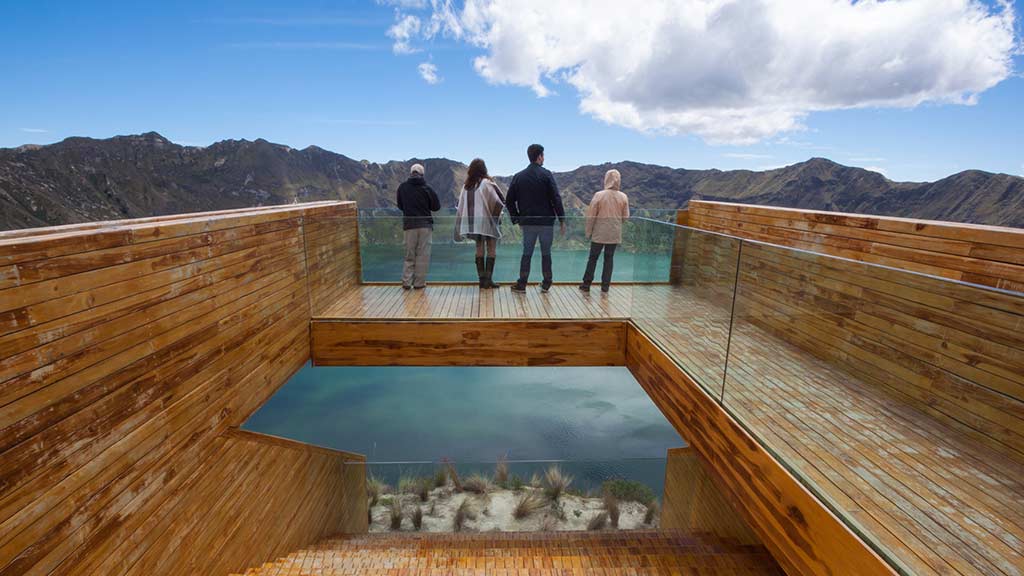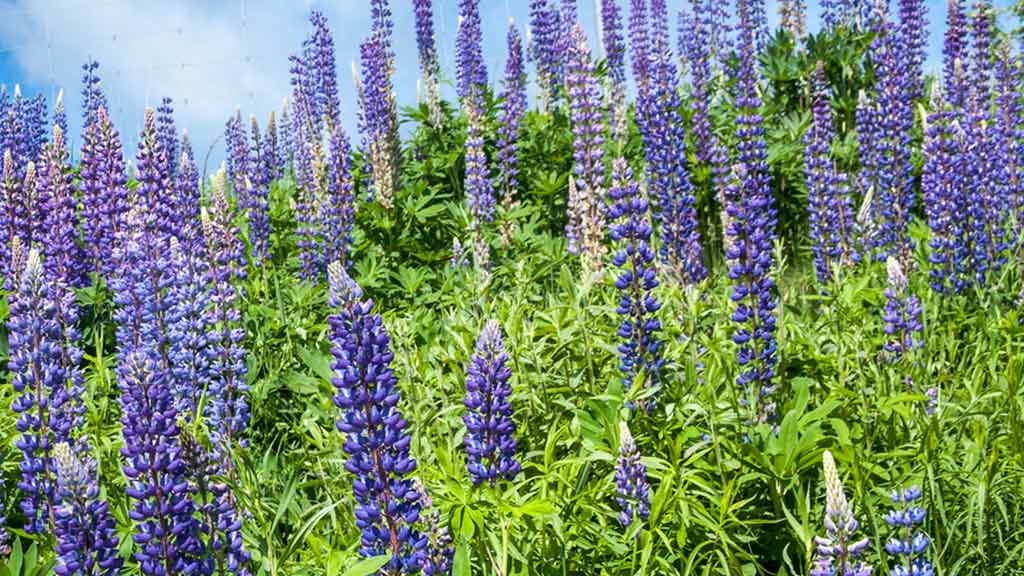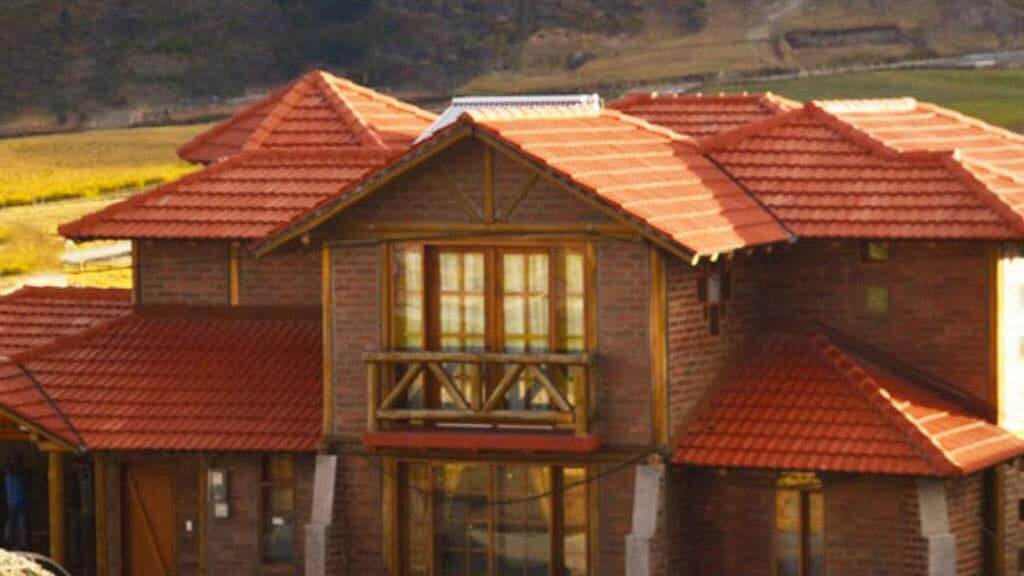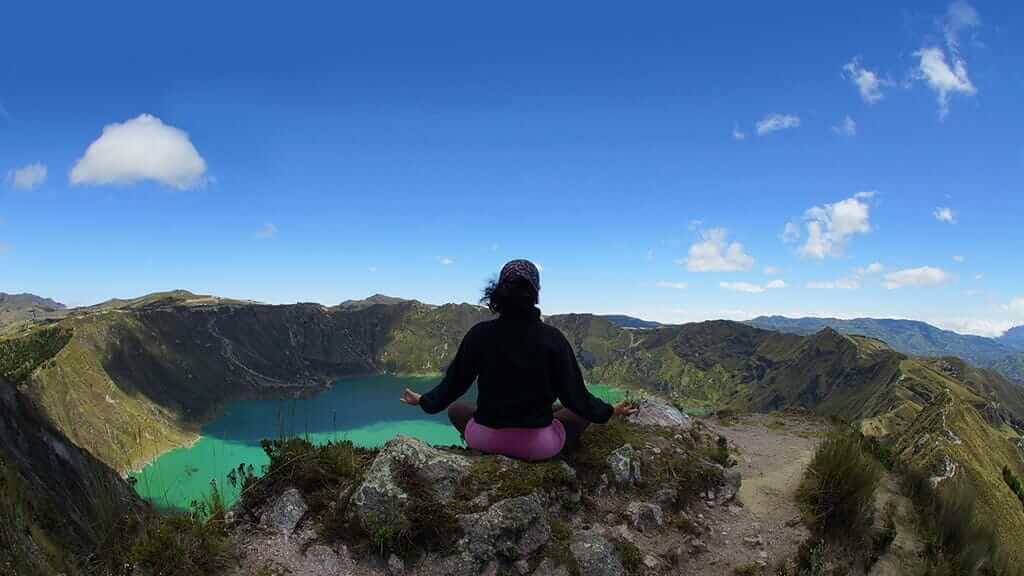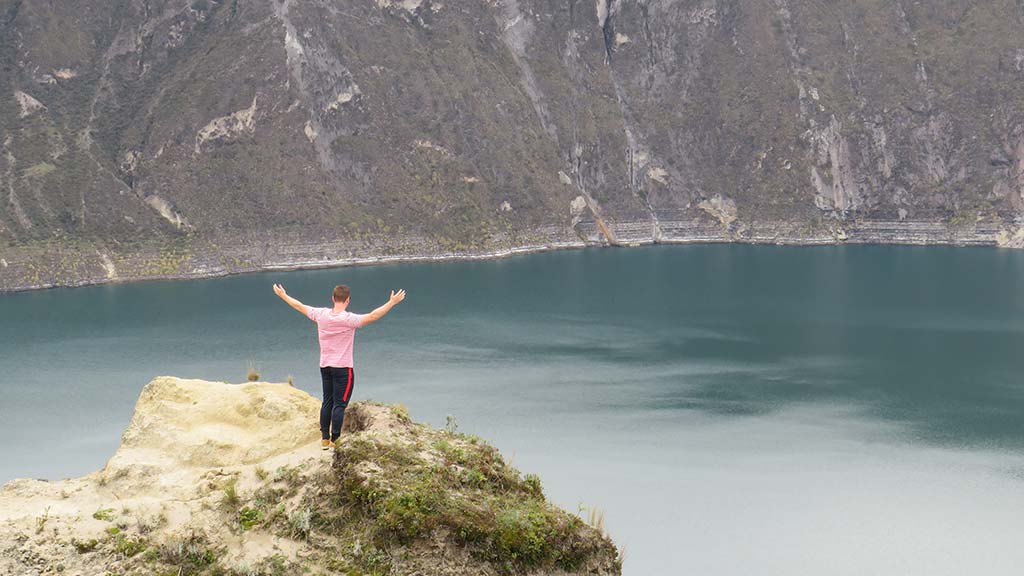Quilotoa Lake Ecuador
Keep reading for everything you need to know to plan an unforgettable visit to Quilotoa.
SECURE YOUR ECUADOR TRAVEL
Get a FREE personalised quote today
How to visit Quilotoa lake?
The good news is that Quilotoa is easy to visit with just a little planning. Quilotoa is rarely crowded with tourists, can be visited as part of a tour or under your own steam, and has heaps of activities to keep visitors entertained.
Where is Quilotoa?
Quilotoa is 178km south west from Ecuador’s capital Quito, located in Cotopaxi province. The driving route to get there follows the Panamericana Highway south as far as Latacunga, then climbs a regional road up to Quilotoa vilage. Fortunately the route is paved the whole way, taking a little over 3 hours drive time.
Different ways to visit Quilotoa
Most international tourists book a Quilotoa day tour. This is recommended to avoid stressful travel logistics, and make flexible stop-offs along the way. The route up to Quilotoa passes through some of the most spectacular Andean scenery in the country, including Tigua and Zumbahua, so photo-stops are a must.
For backpackers, there is a daily bus that runs from Latacunga up to Quilotoa Lake. At time of writing the service departs Latacunga Terminal at 12:15, 13:15 & 16:15 (subject to change). Getting from Quito to Latacunga is easy, with frequent services departing Quito’s Quitumbe Terminal every day. Cheap, rustic accommodations are available in the Quilotoa community. No prior booking is usually required for any of these services, unless you plan to travel on an Ecuadorian public holiday.
The mountains and canyon in the Quilotoa area are so stunning that a multi-day Quilotoa tour is also highly recommended. Treking the Quilotoa Loop is an unforgettable way to immerse yourself in the rural Andes, getting to know the local indigenous culture in small villages along the way. Happy Gringo also offer a popular 4day Quilotoa Loop Highlights tour with driver and comfortable overnight stays. Or for something a little different try Quilotoa Loop Horse Riding.
Things to do at Quilotoa Lake
Quilotoa Crater Lookout
Most tourists start their visit at the crater lookout (mirador), and for good reason too, as you catch your first view or the lake and will immediately be reaching for your camera. There are various wooden lookout platforms with spectacular, panoramic views of the crater and lagoon.
Quilotoa Trek
Hiking into Quilotoa crater is both popular and a highly rewarding experience. Visitors can hike all the way down to the lake shore, with lots of photo opportunities on route. The trek down takes just 20-30 minutes over steep, sandy terrain. Don’t forget that the trek up is much harder, especially at high altitude! Most tourists make it out in under 1 hour, but it’s no race so just take your time. Locals also rent out mules for aprox $10 for those who really can’t face the daunting upwards slog.
It’s also possible to hike right around Quilotoa rim, although this is not a trek for the faint-hearted. The 7.5 mile loop runs up and down over a narrow path with tough terrain. Hikers are exposed to the weather throughout, and close to vertical drops. That said the views are fabulous, but don’t attempt it on a windy day.
Camping & Kayaking
Boat trips take visitors out onto the lake, and kayaks can be rented from the same small dock.
There is a also a campsite by the small wooded area inside the crater. It’s hard to beat the isolation and spectacular scenery, but do go prepared for cold nights.
GET FREE ADVICE
From an Ecuador destination expert today
Plantlife & Bird watching
Quilotoa is a great example of high paramo grassland terrain. Keep a look out for colorful flowers including purple Andean Lupins, and orange Chuquirawa thistles which are emblemic of the region.
Observant visitors will notice lots of bird song inside the crater. Try to spot hummingbirds, doves, flower-piercers, ground tyrants and finches among others.
Local Handicraft Shopping
The village of Quilotoa has it’s own indoor handicraft market, as well as lots of small shops along the street. Woollen knitwear is especially popular, especially for tourists who did not come prepared for the cold. Painted masks and cute, furry guinea-pig toys are quite typical of the region. It is ok to negotiate for cheaper prices here.
Other Lookouts
Quilotoa Shalala Hostal is about 5km around the south rim of the crater lip. The Shalala Overlook is as spectacular as the main village, and the glass wall is less obstrusive for photos.
Another highly recommended lookout in the area is that of the Toachi River Canyon. There is a sign posted pull-off about 7km along the main road from Quilotoa towards Zumbahua. The views into the canyon and of the surrounding area are outstanding.
Practicalities for Visiting Quilotoa
Here are a few practical tips for those planning a visit to Quilotoa.
• It gets very cold up in Quilotoa village, especially at night. Travel prepared with layers and wooly hats / gloves.
• Good hiking shoes are recommended as the terrain is sandy and uneven.
• Quilotoa is at high altitude – acclimitise in advance to avoid suffering from altitude sickness.
• The Quilotoa entry fee is $2 per person (at time of writing), which includes parking and use of bathrooms.
• Quilotoa accommodations are rustic, often without running water and with basic food. More cosy & comfortable hostals are available in other villages along the Quilotoa loop such as Chugchilan & Isinlivi.
• Bring snacks and drinking water along with you, although small shops in the village also sell basic food supplies.
• Photographers will need a wide-angle lens to fit the entire crater lake into one shot.
Quilotoa Lake Facts
How high is Quilotoa?
Quilotoa village sits at an altitude of 3,914m (a little over 12 and ½ thousand feet) above sea level. The elevation of Quilotoa lake shore inside the crater is 364m lower.
How deep is Quilotoa lagoon?
The lake is estimated to have a depth of up to 250 metres. The steep crater slopes mean that there is a sharp drop-off to this depth.
How big is Quilotoa crater?
Quilotoa crater measures 3km (2 miles) in diameter, with a circumference of aprox 10km (6 miles).
How did Quilotoa lake form?
Quilotoa Volcano last erupted around 1280 in one of the planet’s most explosive eruptions of the past 1000 years. It caused the collapse of the volcanic dome to form the wide crater seen today. Quilotoa Volcano has since been dormant.
Where does the lake’s spectacular color come from?
Volcanic minerals in the crater give the lake water it’s emerald-green tint. The water color also appears to change depending on time of day and sunlight.
Can you swim in Quilotoa lake?
Quilotoa Lake swimming is a big no-no. Swimming in the lake is in fact more dangerous than at first might appear. The depth drops off very quickly, the water is extremely cold, and exposure to the volcanic minerals is unhealthy. For these reasons swimming in Quilotoa lagoon is not permitted.
The #1 Trusted
Ecuador Travel Agency
In conclusion, Quilotoa Lake is one of the most stunning photogenic destinations in Ecuador. Quilotoa is easier to visit than you might imagine, and has activities to suit all tastes. The fact that it is a little off of the beaten track just makes for more of an adventure, and lets you enjoy it without hordes of tourists. We highly recommend spending more than just a single day in this spectacular region of Ecuador, especially if you enjoy treking.

